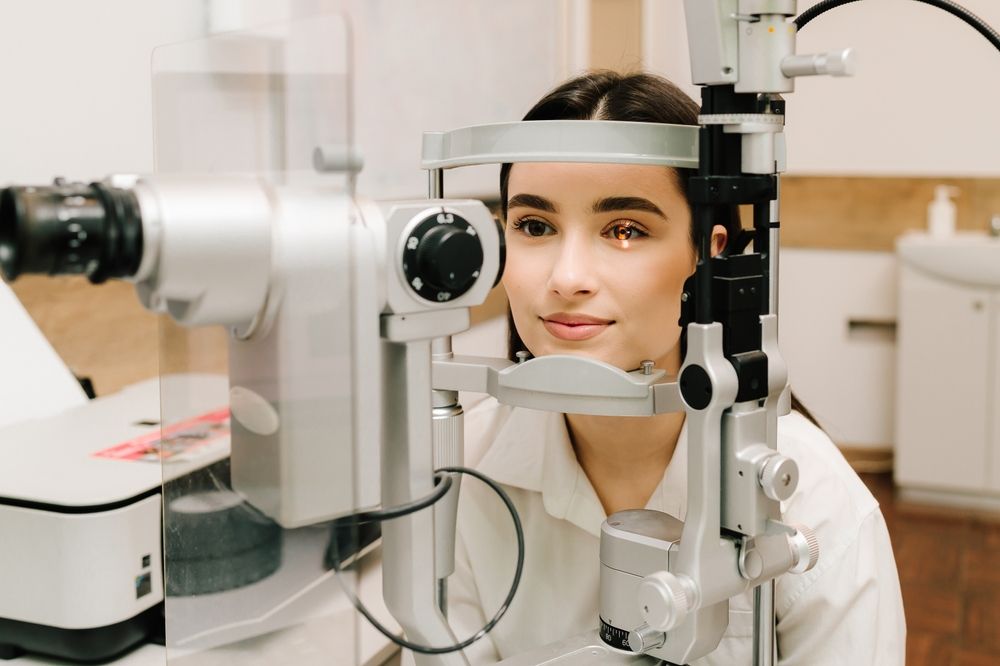At Colorado Eye Clinic in Greenwood Village, Denver, CO, Dr. Abed Namavari stresses that regular eye exams are a vital part of maintaining long-term vision health. Just like annual physical checkups for the body, eye exams are essential for detecting changes in eyesight and uncovering hidden eye diseases that may not show early symptoms. Many conditions, including glaucoma and macular degeneration, progress silently until significant vision loss has occurred. Early detection through routine visits allows for timely treatment and prevention of complications.
Eye exams also play a crucial role in monitoring general health. An ophthalmologist can detect signs of systemic conditions such as diabetes, hypertension, or autoimmune diseases through detailed evaluation of the retina and blood vessels. For patients of all ages, eye exams serve as both a safeguard for vision and an important indicator of overall wellness.
Recommended Frequency for Adults
The American Academy of Ophthalmology provides clear guidelines for how often adults should schedule eye exams. For adults without known eye problems, a comprehensive eye exam is generally recommended once in their 20s and twice in their 30s. As individuals approach their 40s, the frequency of visits should increase, with a baseline exam suggested at age 40. From this point forward, exams every two to four years are advisable until age 54, then every one to three years until age 64. After age 65, annual or biannual visits are typically recommended.
These guidelines ensure that age-related conditions such as presbyopia, cataracts, glaucoma, and macular degeneration are closely monitored. As aging eyes become more vulnerable to changes in vision, having a trusted ophthalmologist helps patients maintain clear sight and adapt to new challenges. Regular appointments also give patients a chance to ask questions about new symptoms, changes in prescription, or treatment options.
Eye Exams for Children and Teens
Children also benefit significantly from regular eye care. Vision problems in childhood can interfere with learning and development, making early detection essential. Pediatric eye exams often begin at birth, with pediatricians screening for congenital issues. A comprehensive exam by an ophthalmologist or optometrist is typically recommended around age three and again before starting school.
Throughout school years, children should continue to have exams every one to two years, or sooner if vision concerns arise. Early intervention for conditions such as amblyopia, strabismus, or refractive errors ensures that children have the best possible chance for healthy vision development. Teens should also maintain periodic exams, especially if they use corrective lenses or participate in sports that may increase risk of eye injury.
High-Risk Groups Who Need More Frequent Exams
Some individuals require more frequent visits due to higher risk factors. Patients with diabetes, high blood pressure, or a family history of glaucoma are often advised to see an ophthalmologist annually. Additionally, those who have undergone previous eye surgeries or who use contact lenses should maintain consistent appointments to prevent complications.
Certain medications may also increase the risk of eye disease, such as steroids, which can elevate the chance of cataracts or glaucoma. For these patients, close monitoring ensures that side effects are caught early. By following a personalized schedule recommended by their ophthalmologist, high-risk individuals can better safeguard their vision health and prevent serious problems.
What to Expect During an Eye Exam
A comprehensive eye exam is more than just checking for prescription updates. Ophthalmologists perform a series of tests to evaluate vision clarity, eye movement, peripheral vision, and overall eye health. Dilation allows for a closer look at the retina, optic nerve, and blood vessels, providing valuable insight into both eye and systemic health.
Patients may also undergo screening for glaucoma through pressure testing and visual field exams. Imaging technologies, such as optical coherence tomography (OCT), help detect early changes in the retina and optic nerve that are not visible with the naked eye. These thorough evaluations ensure that no underlying conditions go unnoticed and that patients receive appropriate care tailored to their needs.
Conclusion
At Colorado Eye Clinic in Greenwood Village, Denver, CO, Dr. Abed Namavari highlights that maintaining a consistent schedule for eye exams is one of the most important steps toward lifelong vision health. Whether for children, adults, or individuals in high-risk groups, regular visits to an ophthalmologist help ensure early detection of eye diseases, effective treatment, and peace of mind. By understanding how often to schedule exams and what to expect, patients can take an active role in protecting their sight for years to come.
Resources
- American Academy of Ophthalmology. (2019). Frequency of Ocular Examinations. Ophthalmology Journal.
- Klein, R., & Klein, B. E. K. (2013). The importance of early detection of age-related eye disease. Archives of Ophthalmology.
- Cotter, S. A., Cyert, L. A., Miller, J. M., & Quinn, G. E. (2015). Vision screening for children. Pediatrics.

